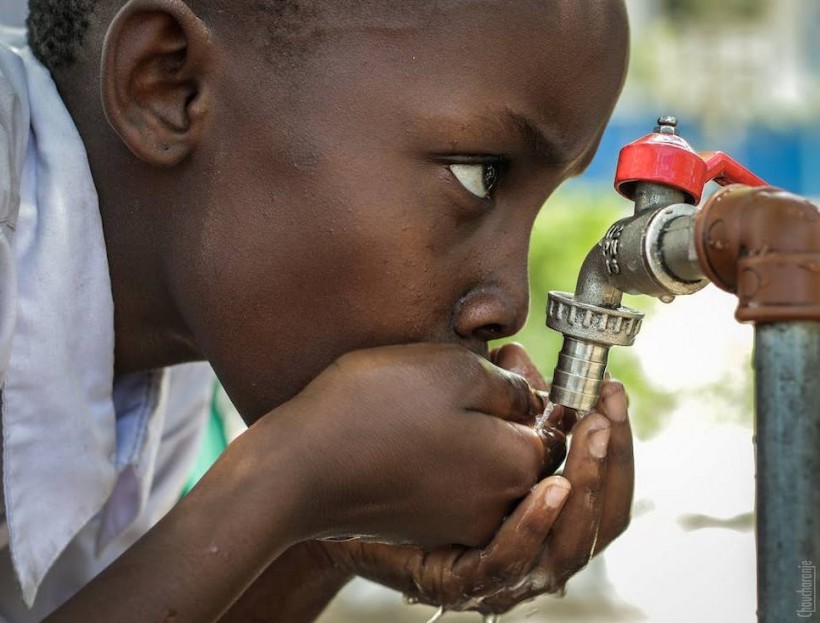The Battle for Clean Water in Contaminated Military Environments
Warning: Undefined variable $post in /home/dietofli/public_html/wp-content/plugins/code-snippets/php/snippet-ops.php(584) : eval()'d code on line 3
Warning: Attempt to read property "ID" on null in /home/dietofli/public_html/wp-content/plugins/code-snippets/php/snippet-ops.php(584) : eval()'d code on line 3
The estimated reading time is 6 minutes
Warning: Undefined variable $post in /home/dietofli/public_html/wp-content/plugins/oxygen/component-framework/components/classes/code-block.class.php(115) : eval()'d code on line 3
Warning: Attempt to read property "ID" on null in /home/dietofli/public_html/wp-content/plugins/oxygen/component-framework/components/classes/code-block.class.php(115) : eval()'d code on line 3

Water is a universal symbol of life and purity, a source of nourishment for our bodies and sustenance for our ecosystems. Yet, in certain corners of the world, this essential resource is far from the pristine image it invokes.
Contamination of water sources is a grave concern, one that disrupts the delicate balance of our environment and poses substantial risks to human health. While pollution takes many forms, there is a specific and often underreported crisis affecting communities living near military installations.
In this article, we will dive into the battle for clean water in these contaminated military environments. We will also underscore the persistent challenges faced by individuals living in the shadows of these bases.
The Silent Enemy: PFAS Contamination
According to the VA Public Health, per- and polyfluoroalkyl compounds (PFAS) have emerged as a substantial danger in contaminated military installations. These hazardous compounds are typically present in firefighting foam, also known as aqueous film-forming foam (AFFF), which is often used to extinguish fires.
The harmful characteristic of PFAS is due to their resistance to environmental degradation. This implies that they can exist in the environment for years, contaminating groundwater and surface water.
Military bases, due to their frequent use of AFFF, have been hotspots for PFAS contamination. Exposure to PFAS through contaminated drinking water can lead to various health issues.
This includes liver and kidney damage, thyroid disorders, and an increased risk of certain cancers. This silent enemy has put both military personnel and nearby communities at risk, sparking concerns and the urgent need for remediation efforts.
Environmental Justice Concerns
One critical aspect of the military water contamination issue is the environmental justice concerns it raises. Often, contaminated military sites are located near economically disadvantaged and marginalized communities. These communities are disproportionately affected by the toxic effects of contaminated water, leading to disparities in health and quality of life.
Environmental justice advocates argue that access to clean water is a fundamental human right. No one should suffer disproportionately due to their proximity to a military base. Addressing these concerns involves not only cleaning up the contamination but also ensuring equitable access to safe water sources for affected communities.
Camp Lejeune: A Notorious Case
Camp Lejeune, a United States Marine Corps facility in North Carolina, is a well-known example of military water pollution. Thousands of military soldiers and their families stationed at Camp Lejeune have been exposed to harmful substances in their drinking water for decades.
The pollution was caused by leaking underground storage tanks, which allowed dangerous chemicals such as trichloroethylene (TCE) and perchloroethylene (PCE) to flow into groundwater.
TorHoerman Law notes that the Camp Lejeune water contamination crisis led to numerous health problems, including birth defects, leukemia, and other cancers. In response to this tragedy, the U.S. government established the Camp Lejeune Family Member Program, offering healthcare and compensation to affected individuals. Ongoing lawsuits are expected to play a significant role in holding those responsible accountable for the contamination.
As per Roll Call, the total settlement for the Camp Lejeune litigation might cost the government more than $20 billion. However, these aren’t individual Camp Lejeune water contamination settlement amounts. The Camp Lejeune litigation is still in its early stages. The complexity of the case has made it challenging to determine precise compensation figures for individual cases at this time.
The Global Reach of the Crisis
While Camp Lejeune is a well-known case of military water contamination, the issue extends far beyond the borders of the United States. Similar concerns have been raised in various countries with military bases.
This includes the presence of PFAS in the drinking water of residents living in the vicinity of these installations. This global reach underscores the need for international collaboration and shared strategies to address military water contamination and its effects on public health.
Scientific Discoveries and Health Implications
Scientific research has played a crucial role in uncovering the links between military water contamination and a range of health problems. Studies have demonstrated that exposure to PFAS and other contaminants can lead to adverse health outcomes. This includes hormonal disruptions, developmental issues in children, and an increased risk of cancer.
The research also emphasizes the importance of ongoing monitoring and surveillance to detect and mitigate potential health risks. As new findings emerge, it becomes increasingly clear that addressing military water contamination is essential to safeguarding public health.
Regulatory Response and Policy Reform
Governments and regulatory bodies have responded to the military water contamination crisis by implementing various measures, including the regulation of PFAS. In the United States, the Environmental Protection Agency (EPA) has taken steps to designate PFAS as hazardous substances. According to the EPA website, a proposal to designate two of the most widely used PFAS as hazardous has already been issued.
Policy reform initiatives aim to prevent future contamination and ensure that affected communities receive the necessary support. This includes stronger oversight of military activities and the enforcement of environmental regulations to protect water resources and public health.
Community Resilience and Advocacy
In the face of crises, impacted communities have demonstrated remarkable resilience and advocacy. Grassroots organizations, community leaders, and activists have come together to raise awareness, demand accountability, and push for justice. Their efforts include seeking compensation for health issues related to water contamination, supporting affected individuals, and advocating for stronger environmental regulations.
These advocates play a crucial role in ensuring that the battle for clean water in contaminated military environments is not forgotten. Their determination serves as a testament to the strength of communities in the face of adversity. Additionally, their work continues to make a difference in the ongoing struggle for clean water.
Final Thoughts
The battle for clean water in contaminated military environments reveals the pervasive and long-lasting impact of toxic substances like PFAS, demanding global attention. It underscores the crucial link between environmental justice and access to clean water for all.
Notable cases like Camp Lejeune serve as stark reminders of the devastating health consequences, and ongoing litigation signals a pursuit of accountability.
Scientific research and policy reforms are pivotal in addressing this crisis, while the resilience and advocacy of affected communities remain a beacon of hope. The pursuit of clean water in military environments is not just a necessity but a testament to our commitment to a healthier world.














